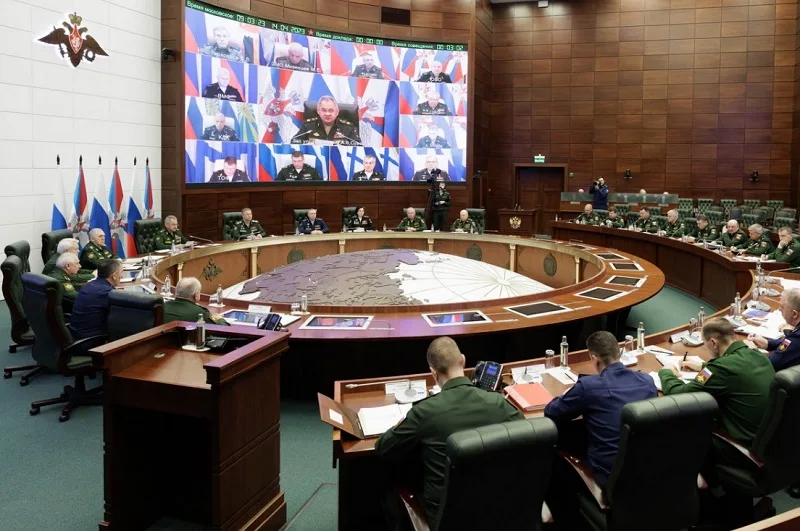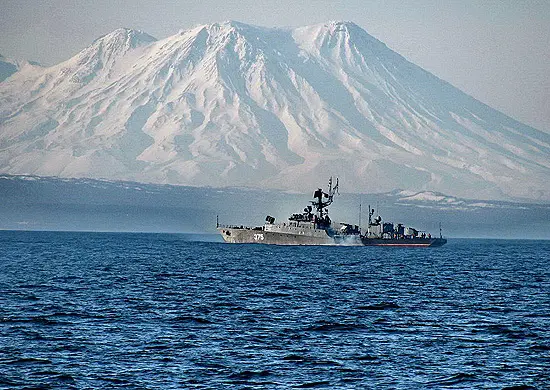In a surprise move that comes while the world remains focused on Ukraine, Russia on Friday put its Pacific Fleet to the highest degree of combat readiness to repel the aggression of a potential enemy from oceanic and sea areas.
The Russian Ministry of Defence said that the alert was raised from 9 AM Vladivostok time (2 AM in Moscow) in order to assess the state and improve the readiness of military command and control bodies, troops and forces to solve missions for their intended purpose in all strategic directions.
During the drills, the Pacific Fleet will have to repel massive missile and air strikes, conduct exercises to search for and destroy submarines, perform torpedo, artillery and missile launches in the course of destroying naval strike groups and ground facilities of a mock enemy.
Headquartered in the city of Fokino on the shores of Peter the Great Gulf, not too far from Japan’s northern Hokkaido island, the Pacific Fleet is one of the largest operational-strategic arms of the Russian Navy.
It ensures the protection of Russian interests in the Asia-Pacific region and contains nuclear-powered strategic and multi-purpose submarines, surface ships, naval missile-carrying aviation, as well as marine infantry, formations of land and coastal troops – from Primorye territory to Kamchatka Peninsula.
The Pacific Fleet’s warships are performing combat service in the Pacific and Indian Oceans, in the Okhotsk, Japan and South China Seas, and also travelling to the Mediterranean.
A part of the Russian aerospace forces, military units and support units are also involved in the unannounced training event.
In accordance with the instructions from the top, the Pacific fleet will have to carry out training of troops for combat operations in a short time and work out a set of combat training tasks both in near and far sea zones.
“In practice, it is necessary to work out methods of action to prevent the deployment of enemy forces in the operationally important area of the Pacific Ocean – the southern part of the Sea of Okhotsk and to repulse its landing on the southern Kuril Islands and Sakhalin Island,” said Russian Defence Minister Sergei Shoigu in his speech at a meeting with the country’s top military commanders on Friday.

He stated that the main exercises with ship groupings should be carried out with the designation of enemy actions and in a difficult jamming environment.
“Within the framework of the measure, it is necessary to create conditions for those being tested that are as close as possible to the content and nature of modern armed struggle,” said Shoigu.
The Asia-Pacific region is already witnessing increased geopolitical tension following North Korea’s recent provocations, including the first test launch of the Hwasong-18, a new type of solid-propellant Intercontinental Ballistic Missile (ICBM).
On Friday, South Korea and the United States conducted a combined air training in connection with the deployment of US B-52H strategic bombers to the Korean Peninsula. The exercise was conducted over the Korean Peninsula with the participation of F-35A and F-15K fighters of the Korean Air Force and F-16 fighters of the United States.
Extended deterrence
ROK & U.S. fighters, U.S. strategic bombers conducted aerial training over the Korean Peninsula today.📷 @rokairforce
🔎 https://t.co/NyPPfGxQPJ#같이납시다 | #WeFlyTogether@ROK_MND | @DeptofDefense pic.twitter.com/GNPYLTGxDf— U.S. Forces Korea (@USForcesKorea) April 14, 2023
The South Korean Ministry of Defence said that, through this exercise, both air forces reaffirmed not only the ability to rapidly deploy US strategic assets on the Korean Peninsula but also the improved combined operational capability and interoperability.
“The ROK and the US will continue to demonstrate their commitment to a strong alliance that will not tolerate any nuclear attack from North Korea through the deployment of US strategic assets that have increased the frequency and intensity of deployment,” the Korean Defence Ministry said in a statement Friday.




















